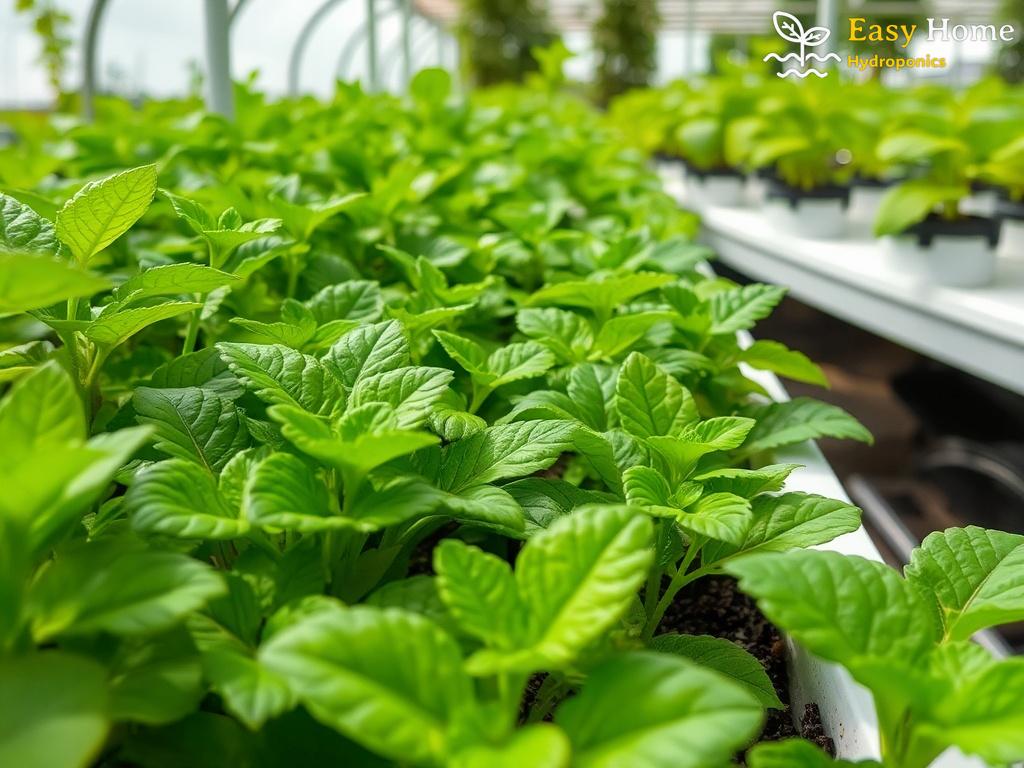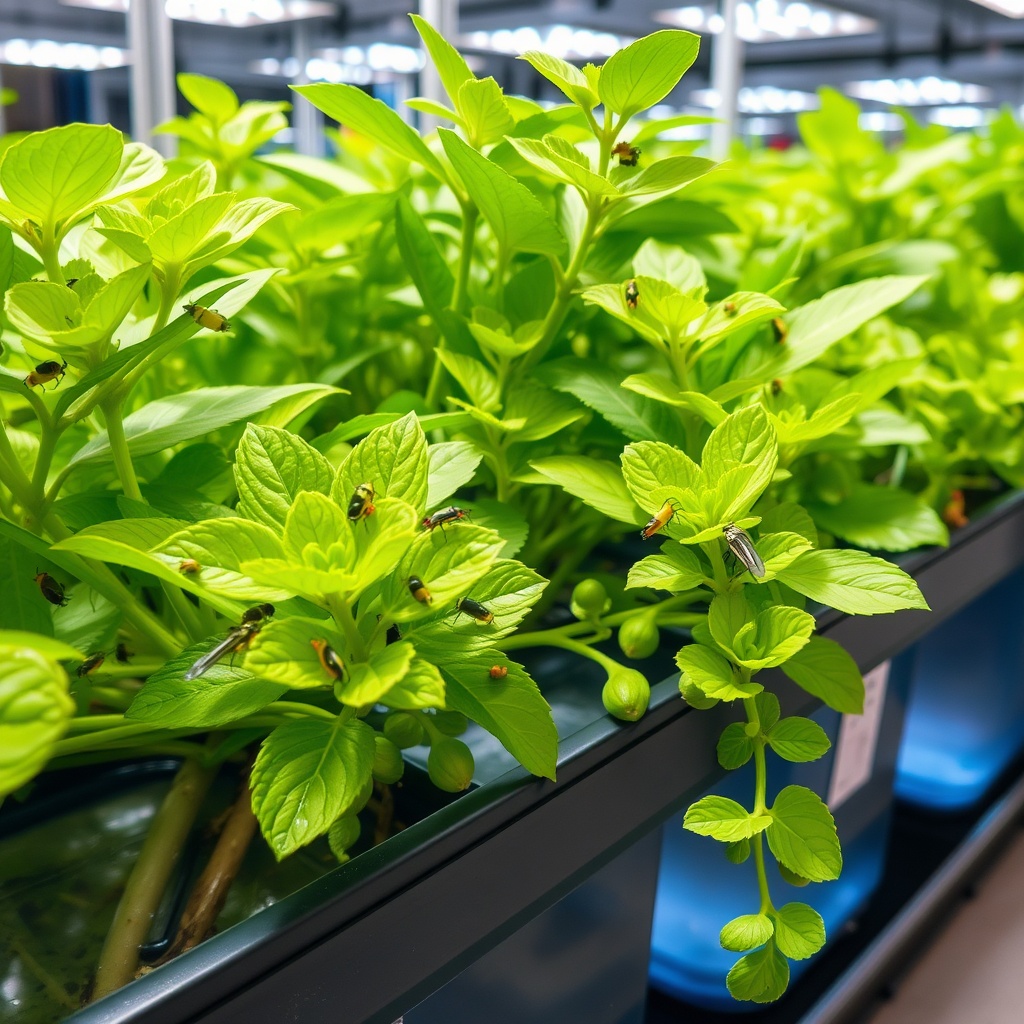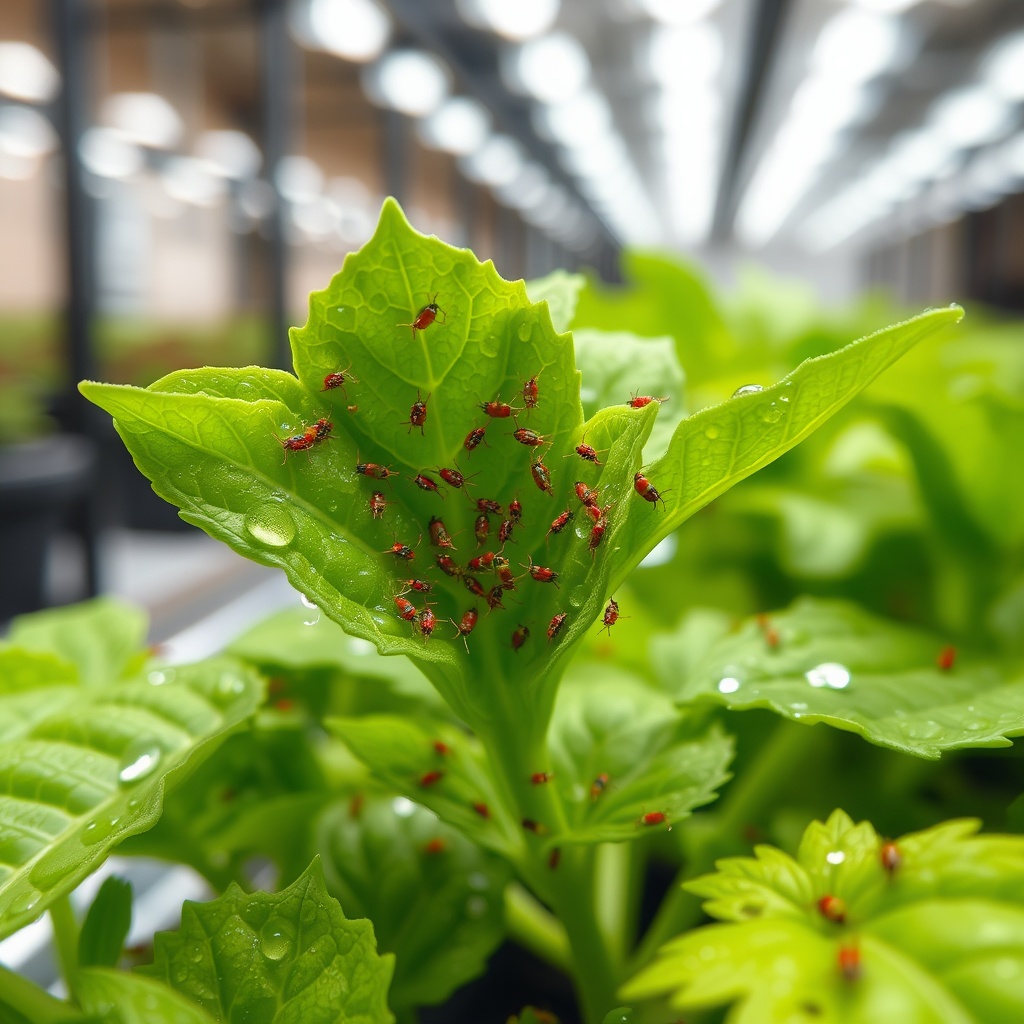Harnessing Potassium Bicarbonate: A Natural Fungal Fighter
In the world of hydroponics, maintaining a healthy environment for plants is paramount. As growers seek effective solutions to combat fungal diseases that threaten their crops, potassium bicarbonate emerges as a natural champion. This compound not only provides essential potassium but also serves as a potent antifungal agent, making it a go-to choice for hydroponic enthusiasts.
Understanding Fungal Threats in Hydroponics
Fungal infections can wreak havoc in hydroponic systems, leading to reduced yields and compromised plant health. Common culprits include powdery mildew, downy mildew, and various root rot pathogens. These pests thrive in the humid environments typically associated with hydroponic setups. Growers must remain vigilant, employing strategies that not only control these fungi but also safeguard the overall ecosystem of their plants.
Why Choose Potassium Bicarbonate?
Potassium bicarbonate stands out as a preferred choice for fungal control due to its effectiveness and safety. Unlike synthetic fungicides, which can leave harmful residues, potassium bicarbonate is a natural compound that decomposes quickly, leaving no harmful traces in the system. Here are some compelling reasons to consider its use:
- Naturally Derived: Sourced from mineral deposits, it’s a safer alternative for organic growers.
- Dual Action: Provides potassium, an essential nutrient for plants, while combating fungal infections.
- Rapid Action: Acts quickly to inhibit fungal spore germination.
- Easy Application: Can be mixed easily with water and applied as a foliar spray or soil drench.
Effective Application Techniques
To maximize the benefits of potassium bicarbonate in your hydroponic system, proper application is crucial. Here’s a simple guide to ensure effective use:
- Preparation: Dissolve potassium bicarbonate in water at a ratio of about 1 tablespoon per gallon.
- Timing: Apply during cooler parts of the day to prevent plant stress.
- Frequency: For best results, treat affected areas every 7-14 days, especially during high humidity.
- Monitoring: Observe plants for any signs of improvement or further fungal development.
The Science Behind Potassium Bicarbonate’s Antifungal Properties
The Mechanisms of Action
The efficacy of potassium bicarbonate as an antifungal agent can be attributed to its unique chemical properties. When dissolved in water, it dissociates into potassium ions and bicarbonate ions. These ions play a crucial role in disrupting the cellular processes of fungi. The bicarbonate ions, in particular, create an alkaline environment that is hostile to fungal growth. This shift in pH inhibits the fungi’s ability to thrive, ultimately leading to their decline.
Impact on Fungal Cell Structure
In addition to altering the pH, potassium bicarbonate affects the cell membranes of fungi. The compound penetrates the fungal cell wall, causing structural damage that compromises the integrity of the cell. As the cell walls weaken, the fungi become more susceptible to environmental stressors, which further enhances the effectiveness of potassium bicarbonate as a treatment.
Comparative Efficacy and Safety
When compared to traditional synthetic fungicides, potassium bicarbonate shines as a safer alternative. Not only does it provide a natural solution to combat fungal infections, but it also minimizes the risk of chemical residues accumulating in hydroponic systems. This natural compound breaks down quickly, ensuring that it poses little to no threat to beneficial organisms within the ecosystem. Studies have shown that while synthetic options may offer rapid results, the long-term sustainability and safety profile of potassium bicarbonate make it a compelling choice for hydroponic growers.
| Property | Potassium Bicarbonate | Synthetic Fungicides |
|---|---|---|
| Efficacy | Moderate to High | High |
| Environmental Impact | Low | Potentially High |
| Residual Chemical Risk | None | Yes |
| Application Frequency | Every 7-14 days | Varies |
Ultimately, the science behind potassium bicarbonate’s antifungal properties lies in its ability to create an inhospitable environment for harmful fungi while promoting a healthier growing space for plants. Its dual role as a nutrient provider and fungal fighter makes it an invaluable asset in the arsenal of hydroponic growers.
Application Techniques for Effective Fungal Control in Hydroponics
Precision in Preparation: Crafting the Perfect Solution
To unleash the full potential of potassium bicarbonate in your hydroponics setup, the preparation phase is critical. A well-prepared solution ensures that your plants receive the optimal dosage for both fungal control and nutrient delivery. Start by dissolving potassium bicarbonate in water at an ideal concentration. The recommended ratio is approximately 1 tablespoon per gallon of water. This concentration strikes a balance, maximizing antifungal efficacy while minimizing the risk of plant stress.
Timing is Everything: Strategic Application for Maximum Impact
When it comes to applying potassium bicarbonate, timing can significantly influence its effectiveness. The goal is to treat your plants during the cooler parts of the day, preferably in the morning or late afternoon. This practice reduces the likelihood of thermal shock and ensures better absorption of the solution. Additionally, applying the treatment during periods of high humidity can help the bicarbonate ions penetrate fungal cell walls more effectively.
Consistency is Key: Maintaining an Effective Treatment Schedule
For lasting results, establishing a consistent treatment schedule is essential. Monitor your plants closely, as early intervention is crucial for managing fungal outbreaks. It is advisable to apply the potassium bicarbonate solution every 7-14 days, particularly in high-humidity conditions that favor fungal growth. Keeping an eye on your plants will help you detect any signs of improvement or resurgence of fungal activity.
In summary, the effective application of potassium bicarbonate in hydroponic systems revolves around precise preparation, strategic timing, and consistent treatment. By adhering to these practices, you can create a thriving environment for your plants while keeping fungal threats at bay.
Steps for Effective Application of Potassium Bicarbonate:
- Dissolve 1 tablespoon per gallon of water.
- Apply during cooler parts of the day.
- Treat every 7-14 days based on humidity levels.
- Monitor for signs of fungal activity or plant health.
Potassium Bicarbonate vs. Traditional Fungicides: A Comparative Analysis
In the ever-evolving world of hydroponics, the choice of fungicides plays a crucial role in the success of crop health and yield. As growers grapple with the challenges posed by fungal pathogens, understanding the differences between potassium bicarbonate and traditional fungicides becomes essential. This comparative analysis sheds light on the strengths and weaknesses of each option, helping cultivators make informed decisions that align with their growing philosophies.
Natural vs. Synthetic: The Fundamental Divide
At the heart of the comparison lies the core distinction between natural and synthetic solutions. Potassium bicarbonate, a naturally derived compound, stands in stark contrast to the chemical formulations of traditional fungicides. While the latter often boast rapid action against fungal threats, they come with a host of environmental and health concerns, including the risk of chemical residues. Potassium bicarbonate, on the other hand, not only provides essential nutrients but also acts as a formidable antifungal agent without the associated risks.
Effectiveness in Combatting Fungal Threats
When it comes to efficacy, both potassium bicarbonate and traditional fungicides exhibit their unique advantages. Potassium bicarbonate works by altering the pH of the environment, creating an inhospitable habitat for fungi, while also penetrating their cell walls to induce structural damage. In contrast, many synthetic fungicides target specific pathways within fungi, leading to more immediate results. However, the rapid action of synthetic options often comes at the cost of long-term sustainability, as resistant strains may emerge.
Key Considerations for Hydroponic Growers
Choosing the right fungicide involves weighing several factors, from safety to environmental impact. Below are pivotal considerations for hydroponic growers:
- Safety: Potassium bicarbonate poses minimal risk to beneficial organisms, while synthetic fungicides can disrupt the ecosystem.
- Environmental Impact: As a natural solution, potassium bicarbonate leaves no harmful residues, unlike its synthetic counterparts.
- Application Frequency: Potassium bicarbonate requires regular applications every 7-14 days, while synthetic options may vary based on product guidelines.
In conclusion, while potassium bicarbonate and traditional fungicides each offer unique advantages, potassium bicarbonate emerges as a holistic solution for hydroponic growers. By prioritizing plant health and environmental safety, cultivators can harness the power of this natural antifungal agent, ensuring a thriving ecosystem for their crops.
Safety and Environmental Benefits of Using Potassium Bicarbonate
Embracing Nature’s Solution for Sustainable Growing
As the world increasingly shifts towards sustainable agricultural practices, potassium bicarbonate stands out as a beacon of hope for hydroponic growers. This natural compound not only combats the persistent threat of fungal diseases but also does so with a remarkable safety profile. By opting for potassium bicarbonate, growers are making a choice that aligns with the principles of environmental stewardship and plant health.
A Gentle Touch on Ecosystems
One of the most compelling advantages of potassium bicarbonate is its minimal impact on beneficial organisms. Unlike traditional synthetic fungicides, which can be harsh and indiscriminate, potassium bicarbonate selectively targets unwanted fungi while preserving the delicate balance of beneficial microbes in hydroponic systems. This selective effectiveness ensures that the ecosystem remains healthy, allowing beneficial bacteria and fungi to flourish, further enhancing plant growth and nutrient uptake.
Rapid Decomposition for a Cleaner Environment
Another vital aspect of potassium bicarbonate is its rapid decomposition in the environment. This characteristic means that it breaks down quickly, leaving no harmful residues that could contaminate water sources or harm the surrounding environment. In contrast, synthetic fungicides can linger, posing risks not only to crops but also to the broader ecosystem. By using potassium bicarbonate, hydroponic growers are championing a cleaner, safer approach that supports long-term sustainability.
Furthermore, the use of potassium bicarbonate in hydroponics reflects a commitment to organic practices. It is derived from natural mineral deposits, making it an excellent choice for organic growers who prioritize ecological balance in their cultivation methods. This organic stance resonates with consumers who are increasingly aware of and concerned about the sources of their food, ultimately leading to greater market acceptance.
In summary, potassium bicarbonate is not just a powerful ally against fungal pathogens; it is also a symbol of responsible agricultural practice. By choosing this natural solution, hydroponic growers contribute to a healthier planet while ensuring the vitality of their crops. The safety and environmental benefits of potassium bicarbonate make it a wise choice for those looking to foster a thriving hydroponic ecosystem.




